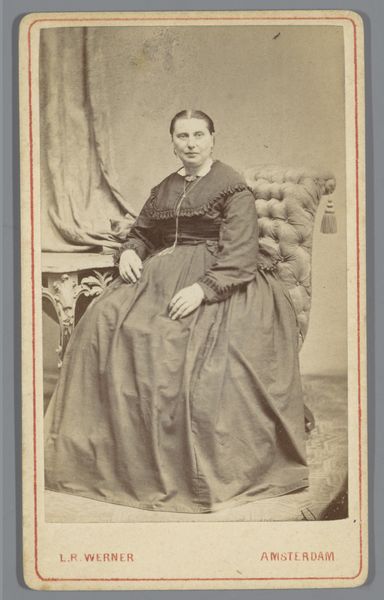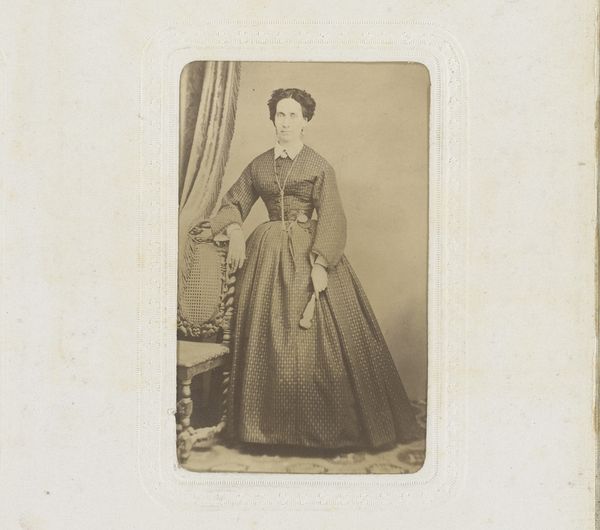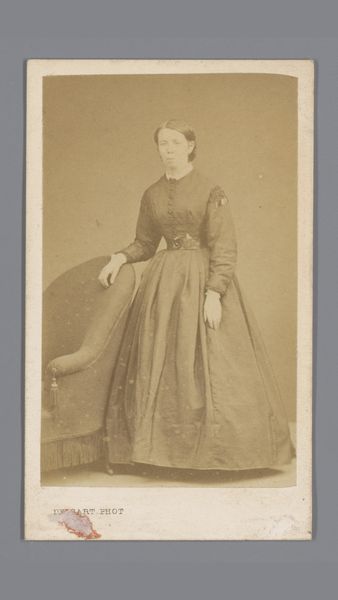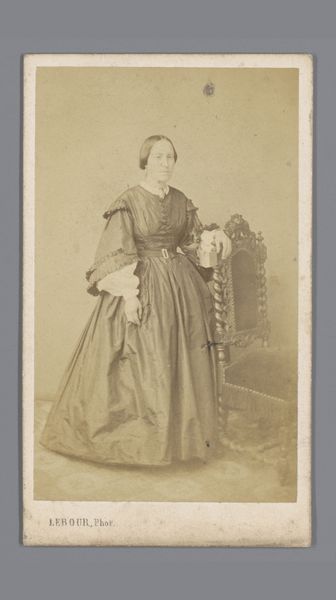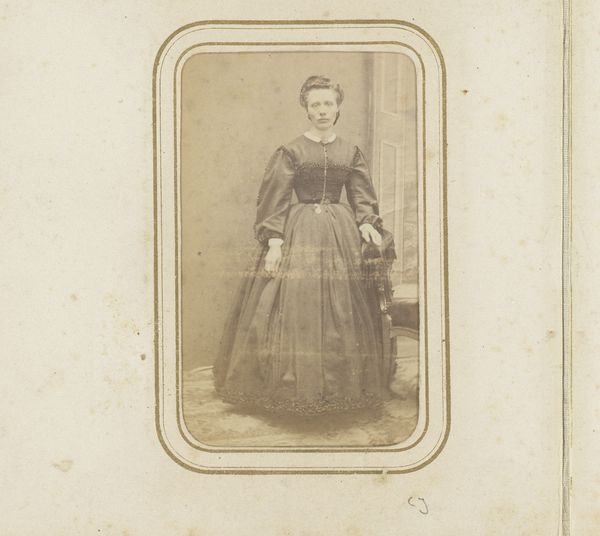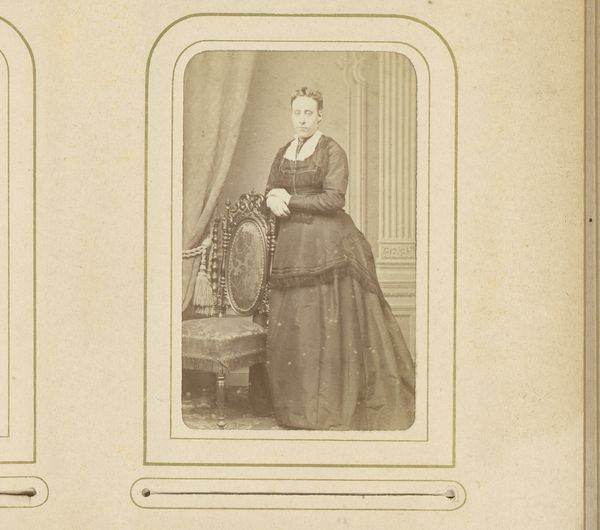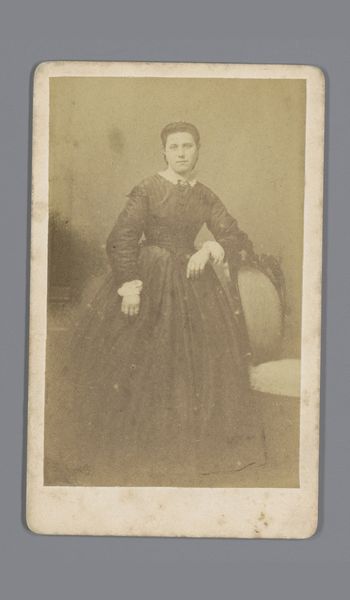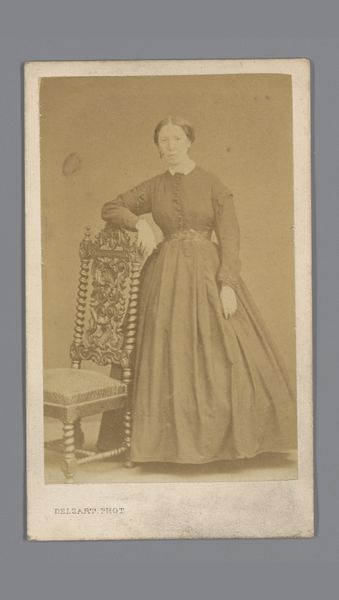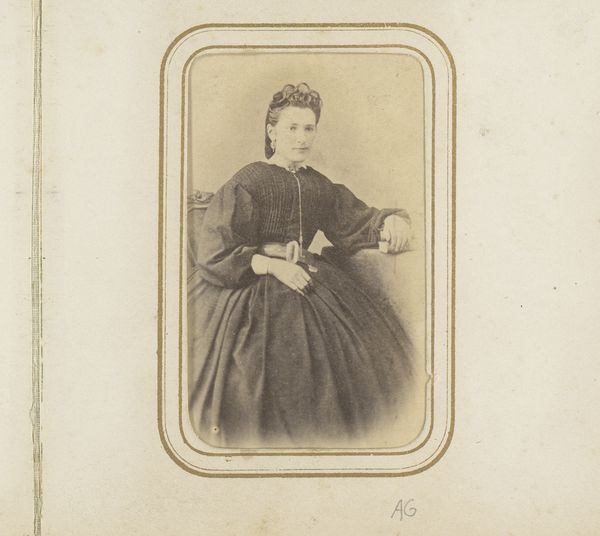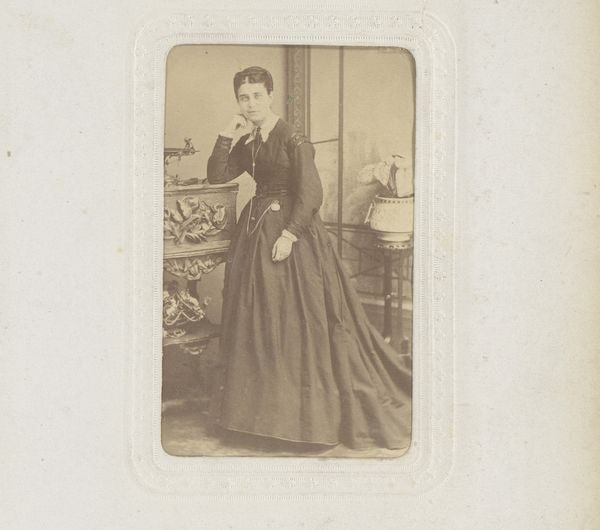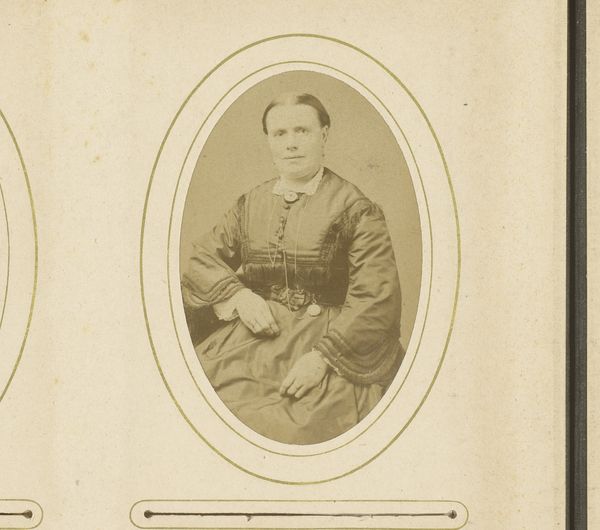
Dimensions: 7 × 4 cm (image, rouned top); 9.6 × 6.2 cm (card)
Copyright: Public Domain
Curator: Here we have a fascinating daguerreotype, dating from about 1840 to 1900, "Untitled (Portrait of a Woman)." We don't know who the artist or sitter were. Editor: The overall effect is one of quiet formality. The woman sits, posed and still, radiating a subtle sense of constraint, doesn’t she? Almost like she is about to give a performance on a tiny stage. Curator: Indeed. Let’s dive into the attire of this unknown subject. Note her high-necked dress, the severe hairstyle, the jewelry… it's all very precisely arranged. Each element projects the carefully constructed identity of the era, which seems a far cry from contemporary society. It also reinforces prevailing gender roles during the mid to late 19th century. Editor: Absolutely. Her dress balloons outwards as she holds her hands carefully, and this juxtaposition makes me question: Does her outfit imprison her, or empower her? It is this very tension that embodies the symbol of societal expectation of women at the time, who often wore restricting garments. Curator: You make an interesting point, but it can be both things at once, right? There’s strength in adherence sometimes. A subversion by simply existing and performing those expectations. But consider the "Patent Applied For" at the bottom of the frame – it suggests a world rapidly changing through technological innovation. Editor: A tiny world contained in a rigid border, echoing the sitter's situation. Do you suppose she even saw photography as this kind of groundbreaking tech, or more as some newfangled way to codify the traditional ideas she grew up with? The ambiguity of it is just wonderful. She doesn't smile, which is striking to me in this modern era where there's so much emphasis on smiles in selfies, etc. Curator: Exactly. She holds so much, giving us nothing but her image to ponder over. She's the image of an icon—composed and contained. I love that interplay. Editor: And that tension is precisely what makes this "Untitled (Portrait of a Woman)" so compelling, even now. The anonymity amplifies its power; she represents a myriad of women bound by historical circumstance.
Comments
No comments
Be the first to comment and join the conversation on the ultimate creative platform.
